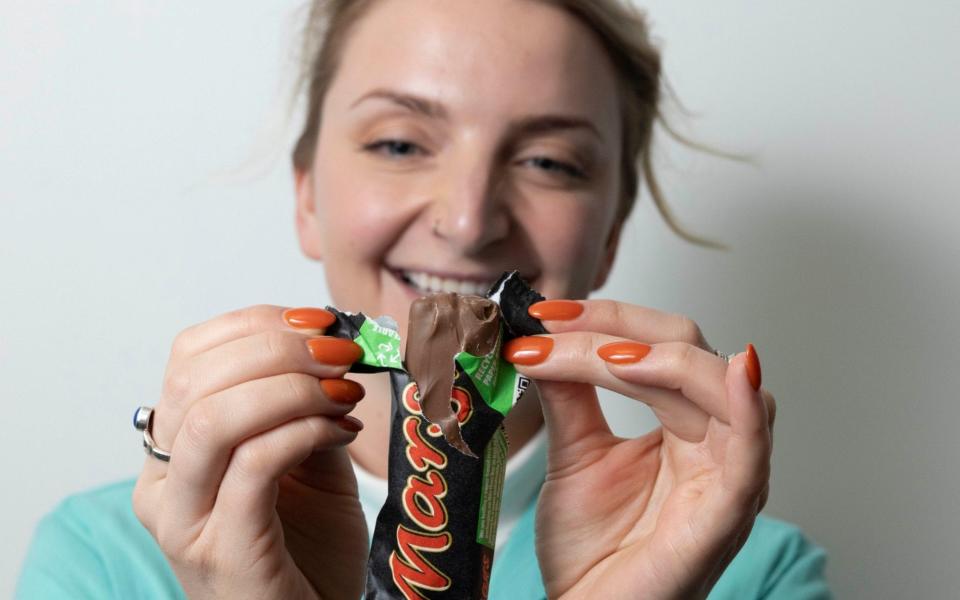Mars bars go retro with paper wrappers in recycling drive

The next time you pick up a Mars bar something might feel different - it will be wrapped in paper rather than plastic.
The new environmentally friendly packaging will remind older fans of how the bars were sold until 1977 - when they were still wrapped in paper by hand, as they had been since launch in 1932.
The trial starts in 500 Tesco stores next week, and - provided there are no major issues - the new wrappers will be rolled out to all retailers and the brand’s other favourites like Bounty, Galaxy, Maltesers, Milky Way and Snickers.
Mars is promising the paper won't affect the freshness, but customers can get a refund if they think it has. They can also scan a QR code to give feedback.
A move to paper across Mars' full range of chocolate bars would save thousands of tonnes of plastic a year going to landfill.
If rivals like Cadbury and Nestle follow suit, it will save tens of thousands of tonnes. The current plastic wrappers cannot be recycled, unlike the new ones.
There have been two main challenges for confectionery firms wanting to bring back paper wrappers.

Expectations for shelf life and also for the freshness of the chocolate are much higher now than in the 1970s - when the surface of chocolate could turn white if left in the cupboard for a few months.
Plastic keeps out moisture and air much better than paper, and keeps chocolate fresh for years.
In addition, the high speed “flow wrapping” of confectionery has only worked with plastic until now. In the past when paper was last used, factories had vast numbers of workers wrapping bars by hand.
Adam Grant, general manager of Mars Wrigley UK, said it had taken the firm - which sells 230 million Mars bars annually - nearly two years to get the right paper and adapt factory lines.
The firm has had to keep a “tiny” amount of plastic on the inside of the wrapper, but this does not stop it being able to be recycled or to break down quickly in landfill.
He said: “It is great that today, we are able to trial a return to paper that is recyclable, but with the advanced, innovative technology that ensures the product quality is not compromised in any way.”
Mars says the new wrappers give bars a one year shelf life.

Rivals are likely to follow suit - as they look to also bolster their green credentials. But experts said it might take time for them to catch up with the technology.
Sarah Greenwood, packaging technology lead at the Grantham Centre for Sustainable Futures, University of Sheffield, said: “As a packaging professional I have spent many long, frustrating hours in front of flow wrapping machines trying to get slightly different types of plastic to run on machines that have been designed to run a specific kind of plastic - let alone another material.
“So kudos to the team at Mars for making this happen with paper.
“I am showing my age now, but when I was a little girl the sweet shelves in my local shop were full of paper-wrapped products.
“Sweets came in rolls with foil liners that you could tear away gradually as you made it down the pack. And mars bars came in the most wonderful 'glassine' paper, dyed black all the way through.
“The joy of eating chocolate is the whole sensory experience and paper really adds to that.”
Mars’s return to paper is a first for a major chocolate brand, and is a key part of Mars Wrigley’s plan to be greener.
And it is the latest example of a return to the “old-fashioned” methods of packaging used before plastic became the norm.
For example, reusable glass milk bottles have made a comeback amid concerns over plastic waste.
Plastic wrappers used for chocolate, sweets and crisps take 20 to 50 years to decompose - but they can take much longer.
Litter pickers in the Forest of Dean in 2016 found crisp packets that had not even started to rot - even though they were thrown away in the mid-1990s, based on best before dates.

 Yahoo News
Yahoo News 
